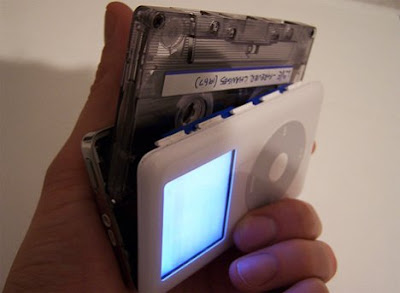

Web resources for telephone information.Repairing Acoustic Research (AR) Speakers.Comments on electrostatic headphone operation and repair.Electrostatic Loudspeakers and Headphones.Some sources for loudspeaker repair parts and services.Electrical causes for loudspeaker damage.Turntable tracking and skating force adjustment.Wow, flutter, and rumble in a turntable.Turntable runs slow or fast after being moved.Annoying tick every 30 seconds or so from audio output.Sudden increase in flutter on tape decks or Walkmen.General tape speed problems - slow, fast, or dead.Walkman plays both sides of tape at once.Autoreverse audio not correct for either or both directions.Cassette or tape playback - one channel dead.Walkman/Discman power or sound intermittent.

Tape transport azimith adjustment 2 (separate REC/PLAY heads).Tape transport azimith adjustment 1 (single REC/PLAY head).Tape or cassette deck, recorder, or Walkman transport problems.General guide to tape deck cleaning and rubber parts replacement.Audio Cassette and Open Reel Tape Equipment.What to do if a tiny tiny part falls inside.Getting built up dust and dirt out of a equipment.Getting inside consumer electronic equipment.Getting zapped from a piece of audio (or other A/V) equipment.Web sites dealing with low voltage wiring.Information on consumer electronics technology.There is no charge except to cover the costs of copying.This notice is included in its entirety at the beginning.If both of the following conditions are satisfied: Reproduction of this document in whole or in part is permitted Notes on the Troubleshooting and Repair of Audio Equipment and Other
#Apple tapedeck mac
TapeDeck is $24.95 in the Mac App Store, but before you buy you can try TapeDeck by downloading it from the homepage.Notes on the Troubleshooting and Repair of Audio Equipment and Other Miscellaneous Stuff But if you just want to quickly get stuff into your Mac and send it to iTunes or YouTube when you’re done, then TapeDeck will work with the hardware you have and will fit the bill nicely as “record & go” software. If you’re looking for the ability to edit audio post recording, this might not be for you. It’s an old school take using new school tools to simplify how you record audio, while giving you some powerful options. Holding down the command-key will open up that avenue for you, allowing you to take tracks from the tape box and stuff ‘em in the trash. If you want to delete audio, it’s confusing since there’s no right-click delete or simple drag & drop. That old garage recording doesn’t have to be lost in a shoebox when it’s all on your Mac. If you have a crap load of recordings, you can use the search bar to filter by color, quality, date, month, month, and year using tags. More powerful than organizing your cassettes by color is the search bar. You can add notes to the tape by clicking on the notes area, change the title, and change the color of the tape by clicking on the A. If you want to monitor what you’re recording (like a guitar riff), you can monitor audio through your headphones or other secondary output device you have connected to your Mac. Your Mac can utilize the ‘x amount’ of channels it’s fed, and TapeDeck can utilize that to capture audio from a specific source.
#Apple tapedeck pro
If you decide you want to connect pro hardware (TapeDeck teases the Digidesign Eleven Rack), you’ll have the choice of choosing between more than just the default two channels. TapeDeck has some weird conventions here and there when it comes to working with your cassettes, but a quick detour through the help files straighten interface quirks out and reveal some advanced functions. You can organize recordings by color, add notes, select audio quality per recording, and choose either stereo or mono (mono only records audio on the first of the two channels you’re recording to).

m4a file which shows up as a cassette in the tap box (the drawer that holds your cassettes). If you have the jack for your Mac’s line-in port, you’ll be able to quickly save off audio to a. TapeDeck for the Mac is a cassette deck for OS X, enabling you to quickly label and record audio from the built in microphone or connected pro hardware, and can allow you to monitor (playback) audio as it’s being recorded. Much like TinyVox which we looked at recently, you’d think TapeDeck would be its older brother (though the two aren’t related).


 0 kommentar(er)
0 kommentar(er)
